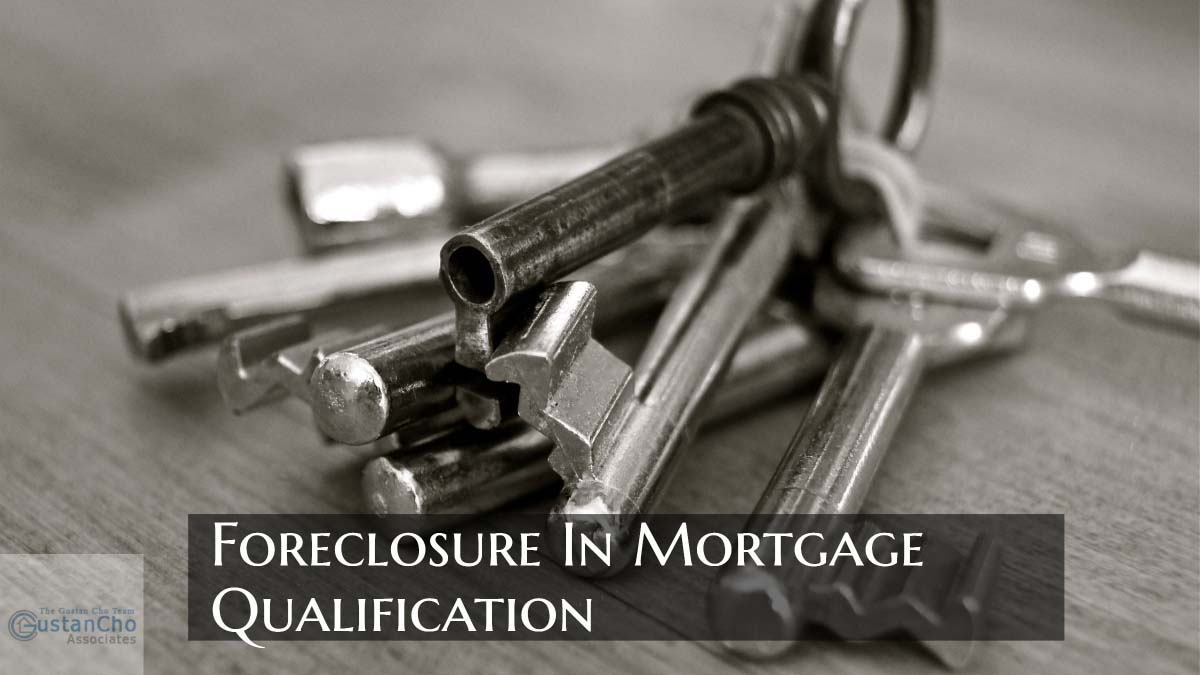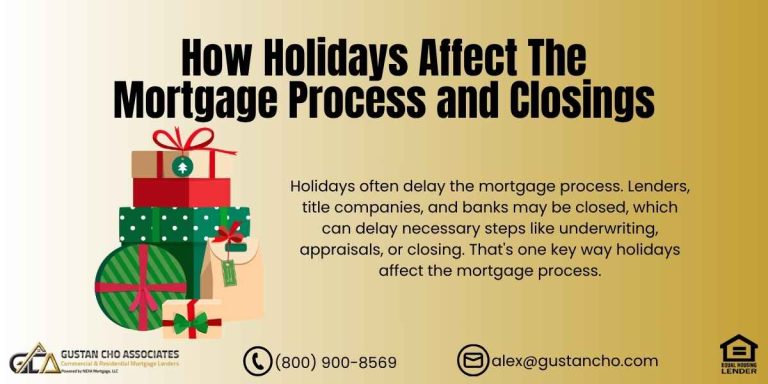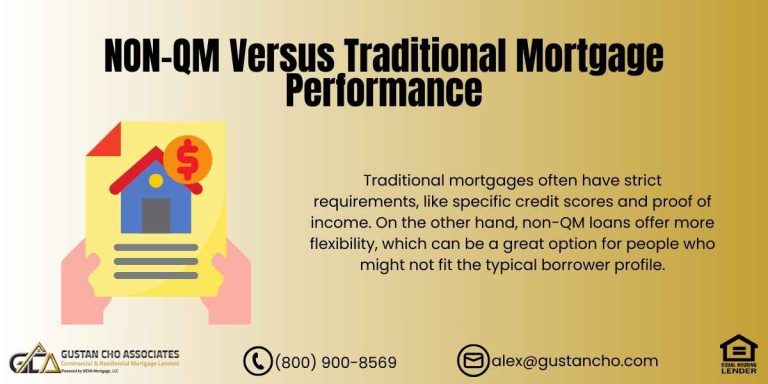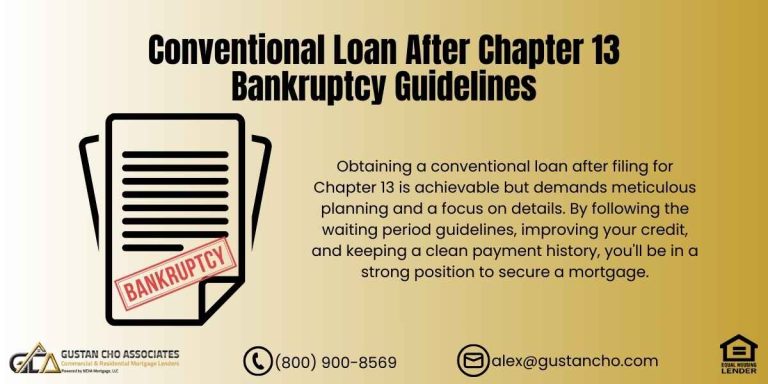This guide covers foreclosure in mortgage qualification lending guidelines. We will thoroughly discuss the waiting period requirements when there is a foreclosure in the mortgage qualification. Government and conventional loans have mandatory waiting period guidelines after foreclosure or a housing event. Conventional loans come from private lenders and are backed by Fannie Mae and Freddie Mac, yet they impose strict rules on anyone with a past foreclosure. Here are the main points. In the following paragraphs, we will cover foreclosure in mortgage qualification lending guidelines.
Understanding Foreclosure in Mortgage Qualification: Conventional and Government-Backed Loan Guidelines
Losing a home to foreclosure is never easy, yet millions still try to reach the dream of home ownership after that tough setback. Because a foreclosure tells lenders that payments were missed on a past mortgage, every major loan program spells out posted rules to separate determined buyers from risky ones. These rules examine credit scores, set mandatory waiting periods, and review borrowers’ full financial picture before handing out another home loan. This handy guide walks you through how foreclosure bends the mortgage approval process, itemizes the exact dos and don’ts for standard loans plus FHA, VA, and USDA backs, and gives fresh tips you can use today to boost your chances.
Had a Foreclosure? You May Still Qualify for a Mortgage
FHA, VA, and non-QM loans allow you to buy again after a waiting period. We’ll help you get back on track.
What Is Foreclosure, and How Does It Affect Mortgage Qualification?
A foreclosure happens when months of missed payments force a lender to seize the home to recover what it is owed. That harsh step chips away at your credit rating, usually shaving off between 100 and 300 points, and then sticks to your report for seven long years. Because every mortgage company watches your credit like a hawk, the stain slows approvals and can even knock you out entirely in the short term. Still, qualifying after a foreclosure is not impossible; lenders build in longer waits and tougher standards to ensure your finances are firmer.
Key Factors Lenders Consider After a Foreclosure
- Waiting Period: You can’t rush into a new mortgage after a foreclosure.
- A mandatory waiting time is enforced.
- Credit Score: A stronger score shows you are more responsible with money now.
- Debt-to-Income (DTI) Ratio: This figure reveals how comfortably you handle monthly bills compared to your income.
- Extenuating Circumstances: Some lenders may trim the wait if the foreclosure stemmed from unavoidable events like job loss or major illness.
Waiting Period for Conventional Loans
- Standard Waiting Period: To apply, you must usually wait seven years from the date the foreclosure was completed.
- The date the title passed to the lender.
- Extenuating Circumstances: If paperwork proves the loss was beyond your control, the wait can be reduced to three years.
- But you still need a 10 percent down payment and good credit.
Credit Score Standards
- Minimum Score: Most conventional loans require at least 620, but lenders may expect 660 or better.
- Post-Foreclosure: Once the dust settles, a score of 680 or higher is often necessary to show real credit recovery.
Down Payment and DTI
- Down Payment: Most new homebuyers put down at least 3%.
- A 5% to 20% bump is also normal.
- After a foreclosure, lenders may ask for 10% or more, especially if tough circumstances were involved.
- DTI Ratio: Lenders love a debt-to-income ratio of 36% or less.
- They’ll stretch it to 43% or even 50% with excellent credit, big savings, or steady extra income.
Additional Requirements
- Documentation: Include a short letter that explains the foreclosure and any backup, like job-loss papers or medical bills.
- Re-established Credit: Show on-time payments for credit cards or car loans since the foreclosure to prove rebuilding.
- Financial Reserves: Two to six months’ worth of monthly mortgage costs tucked away in the bank is often needed to show steady finances.
Foreclosure In Mortgage Qualification Lending Guidelines: Example:
- If your foreclosure wrapped up in July 2022, the normal waiting time ends in July 2029.
- With supporting documents, you may apply in July 2025, as long as your credit and income are solid.
Government-Backed Loan Guidelines for Borrowers with a Foreclosure
FHA, VA, and USDA loans give more room than conventional mortgages, so borrowers with a past foreclosure often favor them. Below are the specific rules for each program.
Foreclosure In Mortgage Qualification: FHA Loan Guidelines
FHA loans are backed by the Federal Housing Administration and are intended for borrowers with lower credit scores or a rocky financial past.
- Waiting Period: If your home was foreclosed on, you generally wait three years from completion.
- With solid paperwork showing extenuating circumstances, some lenders will let you go again after just one year.
- Credit Score: You need a credit score of at least 580 to put down only 3.5%.
- If your score sits between 500 and 579, plan on a 10% down payment instead.
- DTI Ratio: The debt-to-income ratio should ideally be 31% for housing costs and 43% for all debt, yet lenders can go higher if you show extra financial strength.
- Down Payment: See the credit score section for the down payment amounts:
- 3.5% with a 580+ score, 10% if your score is lower.
- Mortgage Insurance: You’ll pay an upfront premium equal to 1.75% of the loan and annual premiums ranging from 0.15% to 0.75% each year.
- Additional Requirements: Your credit must have improved, and you’ll need a brief letter explaining what happened with the foreclosure.
- To qualify for the one-year wait, you must prove the event stemmed from an outside force and complete a housing counseling course.
Foreclosure In Mortgage Qualification Lending Guidelines: Example
Say your foreclosure ended in July 2022; if the shorter wait gets approved, you could file for a new FHA loan in July 2025 or 2023.
VA Loan Guidelines
The Department of Veterans Affairs backs VA loans, which can be used by qualified veterans, active-duty service members, and some surviving spouses.
- Waiting Period: You usually must wait 2 years after the foreclosure is finalized to apply.
- A lender might let you jump in after only 1 year if there were truly extenuating circumstances.
- Credit Score: While the program doesn’t set a hard floor, most banks still look for a score around 620 or better.
- DTI Ratio: A debt-to-income ratio of 41% or lower is preferred, but strong credit or cash reserves sometimes allow a higher ratio to pass.
- Down Payment: Thanks to the VA guaranty, you can often move in with 0% down, even right after a foreclosure if the other boxes are ticked.
- Additional Requirements: You’ll need a new Certificate of Eligibility, trade lines that show re-established credit, and a brief explanation letter about the foreclosure.
- Ensure you also meet the residual income test, which checks how much cash you have left over after all bills.
Foreclosure in Your Past? Let’s Talk About Your Future
You don’t have to wait forever. Learn how long you need to wait—and how to qualify again.
Foreclosure In Mortgage Qualification Example:
So, if your foreclosure wrapped up in July 2022, the door opens in July 2024 (or a year earlier, in July 2023, if you prove those special circumstances).
USDA Loan Guidelines
USDA loans, backed by the U.S. Department of Agriculture, support homebuyers in rural areas with low-to-moderate incomes.
- Waiting Period: With USDA, the post-foreclosure break is generally 3 years.
- Hard proof of hardship can cut it down to 1 year.
- Credit Score: Many lenders settle around 640, though some will go lower if a manual review shows strength elsewhere.
- DTI Ratio: Target 29% for housing costs and 41% for all debt combined, but exceptions still pop up occasionally.
- Down Payment: Like VA loans, USDA almost always allows 0% down, even if a foreclosure dots your record.
- Proof of income within USDA limits, a clean credit track record, and a short letter explaining your past foreclosure are required.
- Also, the house you want must sit in an area the USDA classifies as “rural.”
- If your foreclosure happened in July 2022, you can apply for a new USDA loan in July 2025, or as early as July 2023 if you show “extenuating circumstances” like loss of income due to a serious illness.
Steps to Qualify for a Mortgage After Foreclosure
Ready to seek a mortgage after losing a home to foreclosure? Follow these steps to strengthen your application: Check the waiting period. Each loan type- conventional, FHA, VA, or USDA- has a clock that starts on the day your foreclosure is filed.
Make timely payments, cut credit card balances below 30 percent of your limit, and avoid new credit pulls. A secured card can help if your credit is still shaky. Lower your debt-to-income ratio by paying off high-interest loans or boosting your monthly earnings.
Depending on the lender, aim for a DTI below 36 to 43 percent, forgiving a bit of that past stumble. Set aside enough cash for the up-front costs. Conventional loans often need 3 to 20 percent down, FHA loans demand at least 3.5 percent, VA and USDA loans ask for zero, yet all buyers must plan for closing fees that run 2 to 5 percent of the loan amount.
Step-by-Step Process for Buying a Home After Foreclosure
Gather Your Papers. Before anything else, pull together your most recent pay stubs, tax returns, at least two months of bank statements, and a brief letter explaining what happened during the foreclosure. If you faced extra problems, like a job loss or medical bills, include those documents too.
Foreclosure In Mortgage Qualification: Get Pre-Approved
Reach out to several lenders and request a pre-approval. This quick check will tell you how much house you can afford and flag any red flags early. Side-by-side comparisons will point you toward the best interest rates and terms.
Choose the Right Home
Look for properties that meet the lender’s rules. For example, USDA loans only cover homes in rural areas, and VA mortgages require a specific appraisal.
Submit Your Application
Once you find a house, complete the application with all the paperwork. Underwriters will ask more questions, so reply fast to keep things moving.
Close the Loan
Read the loan estimate and closing disclosure carefully, settle any required closing costs, and then sign the final papers. Then, the keys are yours.
Tips to Improve Your Chances of Approval Post-Foreclosure
Boost Your Credit Score
If you’re going conventional, aim for at least 680. For FHA and similar loans, 620 to 640 usually works. Check your report often, fix errors, and pay bills on time.
Document Extenuating Circumstances
Clear proof, like hospital records or a layoff letter, may shorten the waiting period from a full three years. Keep copies ready.
Work with a Mortgage Broker
A good broker knows lenders that accept post-foreclosure applications and can save you time and effort.
Consider Government-Backed Loans
FHA, VA, and USDA loans have shorter wait times and easier credit rules, making them attractive first stops after foreclosure.
Before You Apply for a Home Loan
- Build financial reserves: Set aside 2 to 6 months’ mortgage payments.
- This cushion proves to lenders you can weather money surprises, like job loss or repairs.
- Complete housing counseling: FHA loans often ask for this course, and showing you did it signals to lenders that you take your finances seriously.
- Plus, you may pick up tips that save you money later.
Common Roadblocks and Workable Fixes
- Long Wait Time: Conventional lenders may make you wait up to 7 years after a foreclosure.
- Fix: Check FHA, VA, or USDA loans that let you reapply in 2 to 3 years, or share proof of special hardship to shorten the gap.
- Low Credit Score: After foreclosure, scores often stay low.
- Fix: Pay bills on time, keep balances low, and avoid new big debts.
- Steady, small wins will lift your score over the months.
- High DTI Ratio: Lenders hesitate if your debt consumes too much of your income.
- Fix: Chip away at small loans, roll multiple debts into one, or start a side gig to boost earnings.
- Insufficient Down Payment: Scraping together a big upfront payment feels impossible.
- Fix: VA and USDA loans require no down payment, while FHA and conventional options may offer local grants or second mortgages to cover part of the gap.
Why Choose Conventional vs. Government-Backed Loans Post-Foreclosure?
Conventional loans usually boast better interest rates and skip the big upfront mortgage-insurance bill, yet they also expect a longer wait (seven years) and higher credit scores. In contrast, government-insured programs- FH, VA, and USDA-ask for a shorter wait of just one to three years, let borrowers with lower scores and tiny (or no) down payments aboard, but they tag on monthly insurance or a small guarantee fee. Your winning path boils down to your specific credit health, pocketbook, and, for example, military service eligibility or rural home plans.
Ready to Move Forward? Talk to a mortgage lender or broker about your past foreclosure, and see how you can start the road back to owning a home.
Buy Again After Foreclosure With Flexible Loan Options
FHA, VA, and alternative lenders offer second chances. We’ll guide you through the requirements.
Foreclosure In Mortgage Qualification
There are mandatory waiting periods after foreclosure in the mortgage qualification process for government and conventional loans. Government Loans are home loans guaranteed and insured by the federal government.
There are three different types of government loans:
- FHA Loans
- VA Loans
- USDA Loans
Conventional Loans are home loans that conform to Fannie Mae and/or Freddie Mac Guidelines. They are private loans, and if a lender conforms to Fannie and/or Freddie, they can resell the loans to Fannie and/or Freddie. If they do not conform, banks and lenders cannot sell the loans on the secondary market.
FHA Loans With Foreclosure In Mortgage Qualification
USDA and FHA Guidelines After Foreclosure in Mortgage Qualification are as follows:
- 3-year waiting period after the recorded date of foreclosure and/or deed instead of foreclosure or the date of sheriff’s sale
- 3-year waiting period after the date of short sale reflected on the HUD-1 Settlement Statement
2-year waiting period after the Chapter 7 Bankruptcy discharge date to qualify for FHA and VA Loans:
- USDA Loans require 3 3-year waiting period
HUD allows those who are in a Chapter 13 Bankruptcy repayment plan to qualify for FHA Loans as long as they have been one year into a Chapter 13 repayment plan:
- There is no waiting period after the Chapter 13 Bankruptcy discharge date to qualify for VA and FHA Loans with Gustan Cho Associates
- Gustan Cho Associates is a national lender with no lender overlays on government and conventional loans
Exceptions To Waiting Period Requirements On FHA Loans
If the homeowner had a prior short sale and the mortgage payments and all other payments have been timely in the past 12 months preceding the short sale, there are no waiting period requirements. If a married couple has a foreclosure and one spouse is on the title but not on the note, the borrower not on the note is not subject to any waiting period requirements.
VA Loans Waiting Period Requirements After Foreclosure
VA Loans have shorter waiting period requirements after foreclosure, deed instead of foreclosure, or short sale.
- The waiting period after Chapter 7 and Chapter 13 Bankruptcy is the same on VA Loans as they are with FHA Loans
- However, there is only a two-year waiting period to qualify for VA Loans after a short sale and a recorded date of foreclosure and/or deed instead of foreclosure
- Gustan Cho Associates does not have any overlays on VA Loans
- VA borrowers with credit scores of 580 and approved/eligible per Automated Underwriting System findings can qualify for VA Loans with Gustan Cho Associates
No debt-to-income ratio requirements on VA Loans: We go off AUS Findings
Judgments
Borrowers with outstanding Judgments can qualify for mortgage loans:
- Judgments need to be paid in full before mortgage loan approval, and/or be clear to close
- On refinance mortgages, judgments can be paid at closing
- Judgments do not have to be paid in full to qualify for mortgage loans
- Borrowers can get a written payment agreement with the judgment creditor and have three months seasoning to qualify for a mortgage with judgments
- The monthly payment on the judgment needs to be included in the debt-to-income ratio calculations
Cannot pre-pay three months’ payments on judgments upfront to meet three months’ seasoning requirements.
Foreclosure Doesn’t Mean You Can’t Own a Home Again
Understand the lending guidelines and how to rebuild your credit to qualify.
No Waiting Period After Foreclosure
Gustan Cho Associates now has a special mortgage program called NON-QM Loans, in which there is no waiting period after foreclosure, deed in lieu of foreclosure, or short sale.
- There is a one-year waiting period after a Chapter 7 Bankruptcy. A 20% down payment is required
- Contact us for more information
- NON-QM Loans are a bridge loan program
- Homebuyers do not have to wait the mandatory waiting period after a foreclosure or short sale
Borrowers can refinance later when they meet the minimum waiting period requirements.
Foreclosure In Mortgage Qualification On Conventional Loans
Conventional Loans classify deed instead of foreclosure and short sale differently from standard foreclosures.
Here are the waiting period requirements on conventional loans after foreclosure in mortgage qualification:
- 4-year waiting period to qualify for conventional loans after short sale and deed instead of foreclosure
- 7-year waiting period to qualify for conventional loans after a standard foreclosure
There are many instances in which mortgage borrowers can qualify for conventional loans even if they do not qualify for government loans.
- This is when homeowners had a mortgage as part of Chapter 7 Bankruptcy
- With conventional loans, the four-year waiting period clock starts from the discharge date of Chapter 7 on cases where people had mortgages as part of their Chapter 7 Bankruptcy
- Mortgage cannot be reaffirmed, and the housing event needs to be finalized
- With government loans, if homeowners had a mortgage or mortgages part of Chapter 7 Bankruptcy discharged date, then the waiting period starts when the foreclosure, deed instead of foreclosure, or short sale has been finalized
Borrowers who have questions about qualifying with a direct lender with no lender overlays should contact Gustan Cho Associates at 800-900-8569 or text us for a faster response. They can also email us at gcho@gustancho.com. We are available evenings, weekends, and holidays seven days a week.
Not Sure If You’re Ready to Apply After Foreclosure?
We’ll review your timeline, credit, and income—and build a personalized plan to help you qualify.










